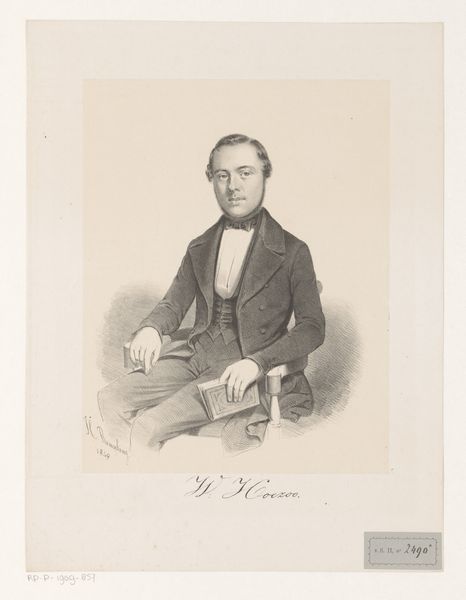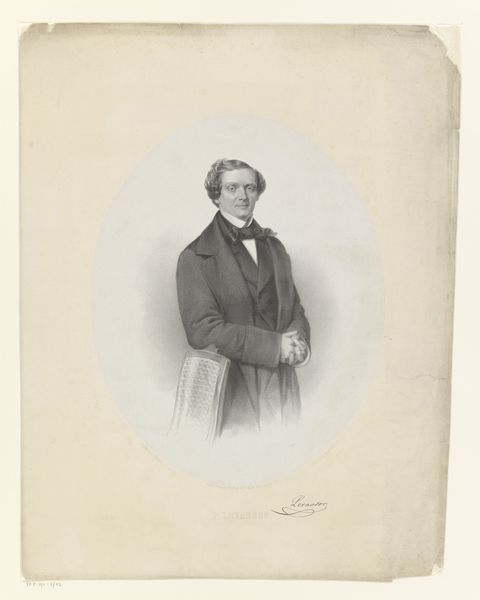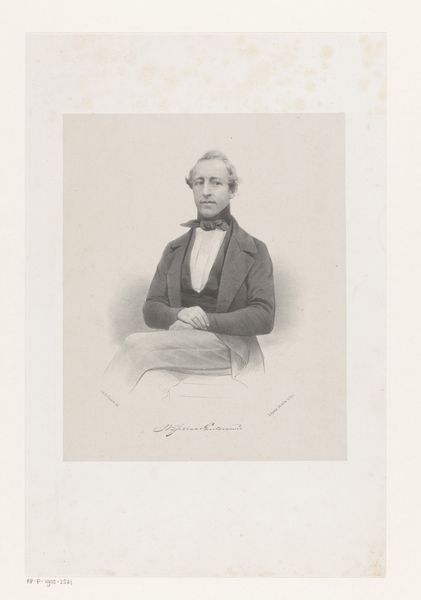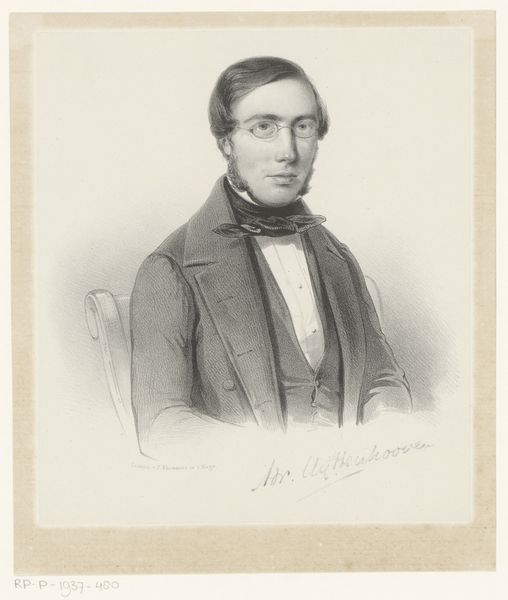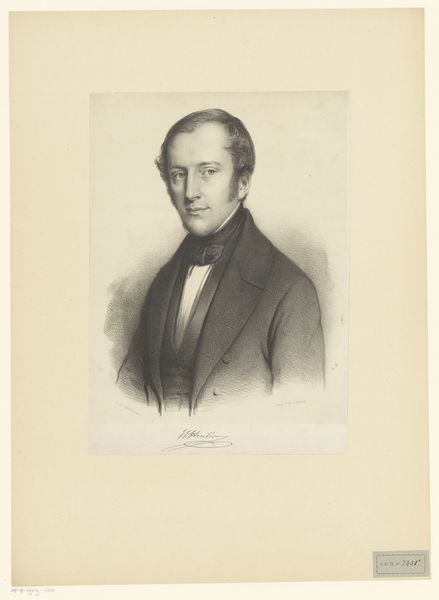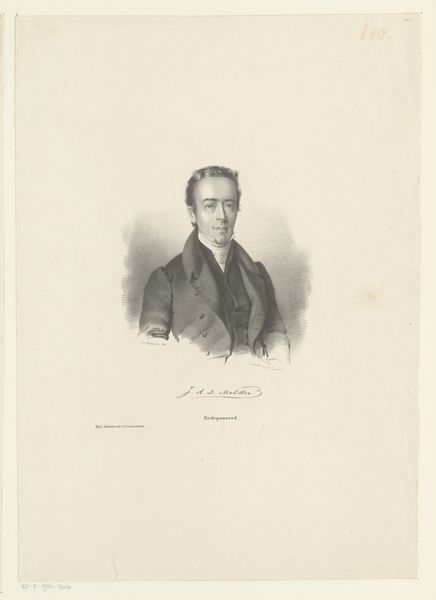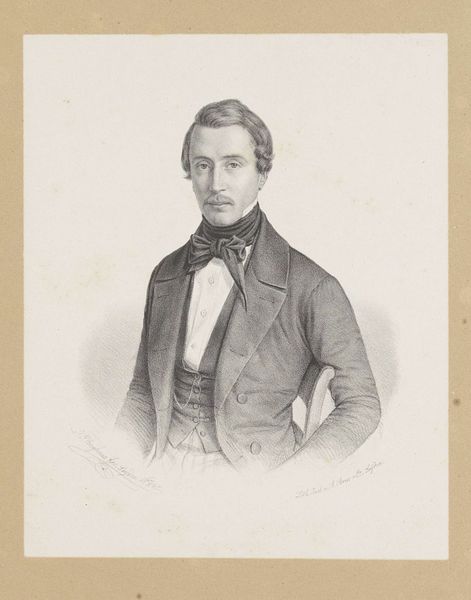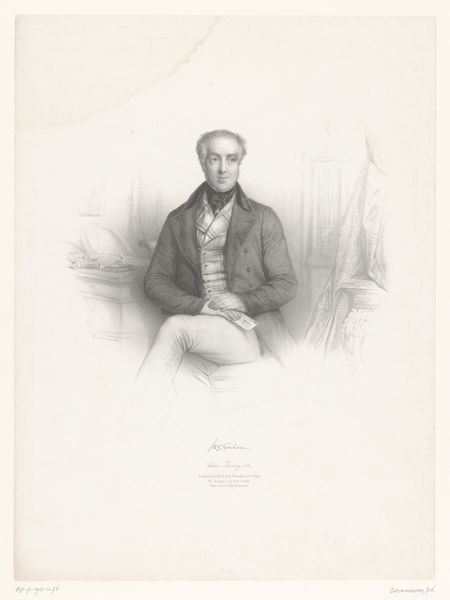
drawing, pencil, graphite
#
portrait
#
pencil drawn
#
drawing
#
pencil sketch
#
old engraving style
#
figuration
#
pencil drawing
#
romanticism
#
pencil
#
graphite
#
portrait drawing
#
pencil work
#
academic-art
Dimensions: height 439 mm, width 299 mm, height 289 mm, width 203 mm
Copyright: Rijks Museum: Open Domain
Editor: So, this is "Portret van een onbekende man" by Heinrich Ditlev Mitreuter, a graphite drawing from 1843. It's striking how formal the subject appears; I’m curious to know, how do you interpret this work beyond its face value? Curator: This portrait offers a glimpse into the construction of masculinity in 19th-century Europe. Notice his attire, the confident yet subtly restrained pose, and the meticulous rendering of his features. It begs the question, who was this man, and what power dynamics were at play that necessitated such a carefully constructed image? Can we consider this a study on identity and societal expectations? Editor: That's interesting! I hadn’t thought about the “construction” aspect so explicitly. So, you're saying the portrait isn't just a likeness, but also a statement? Curator: Exactly. Romanticism, the artistic movement of the time, often explored individual identity within societal structures. This portrait could reflect the subject's desire to present himself in a certain light, conforming to or perhaps even subverting the prevailing ideals of his time. What message do you think he might have been trying to convey? Editor: Maybe a message of authority, but also perhaps a vulnerability through the intense details in his face... almost melancholic. Curator: Precisely! These subtleties complicate a straightforward reading. His gaze, while direct, holds a certain vulnerability. Perhaps Mitreuter captured a tension between the societal expectations of masculine stoicism and the subject’s internal emotional landscape, don’t you think? And to me that brings up broader concerns with class and race during that time. Who was able to have their portrait created and how might these symbols vary across time? Editor: I see it now. Looking at it again, there’s so much more than just a formal portrait. Thank you; I am thinking about the man’s expression, wondering about the historical context, and seeing how art reflects identity so closely. Curator: It has been wonderful to think with you on the work's impact through the ages.
Comments
No comments
Be the first to comment and join the conversation on the ultimate creative platform.
